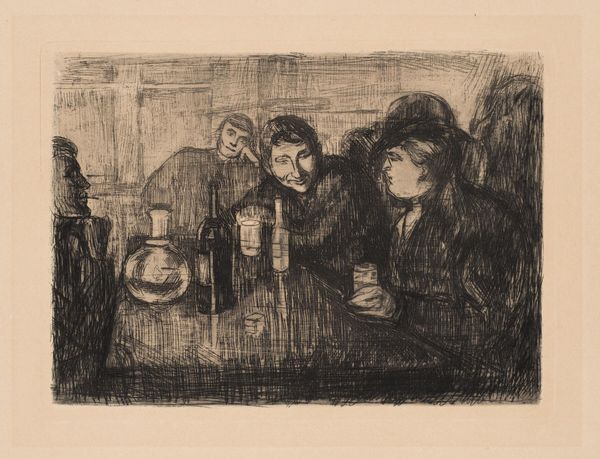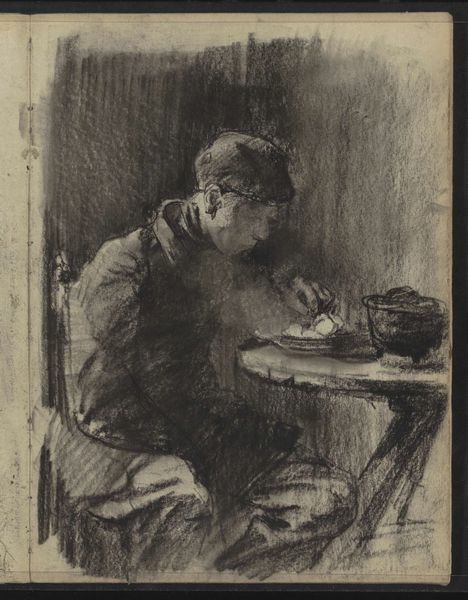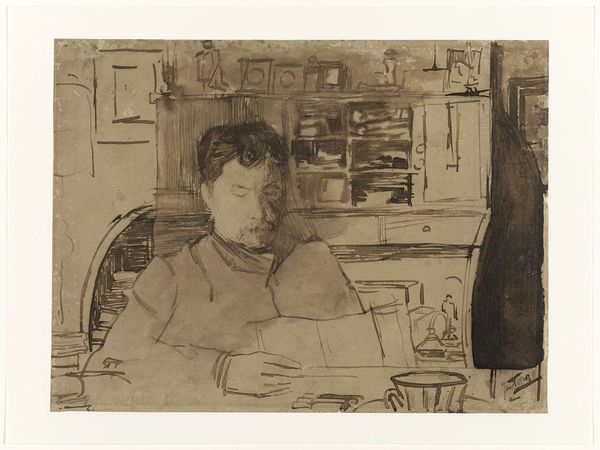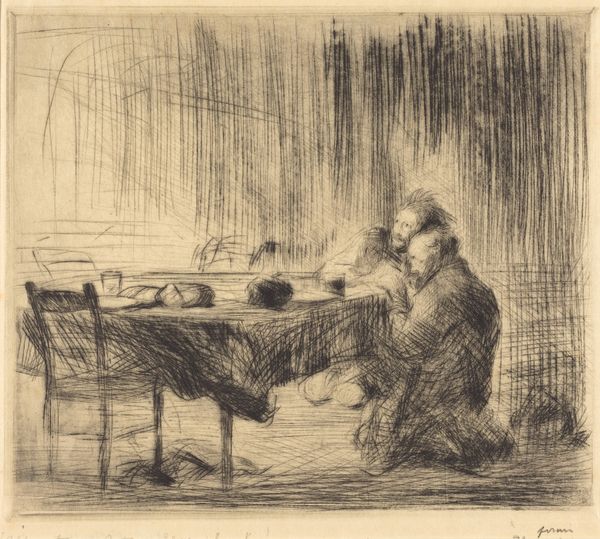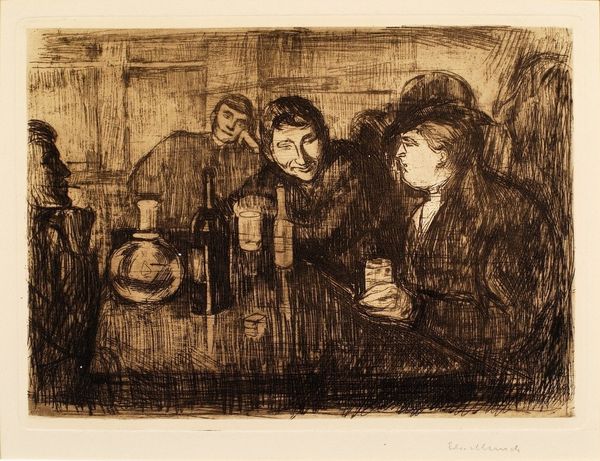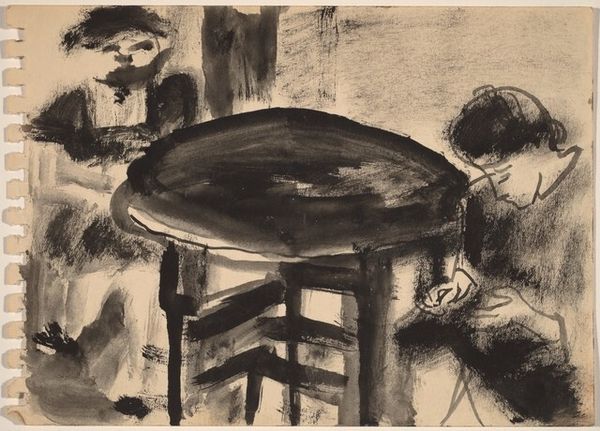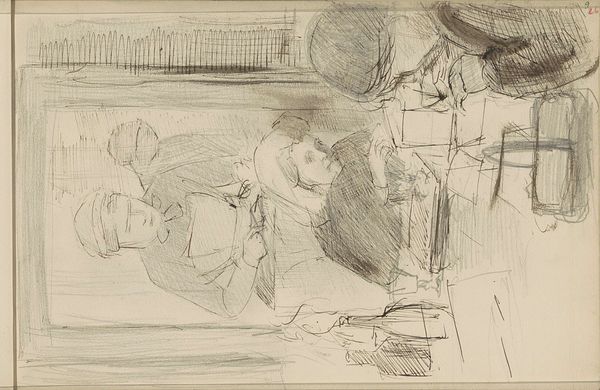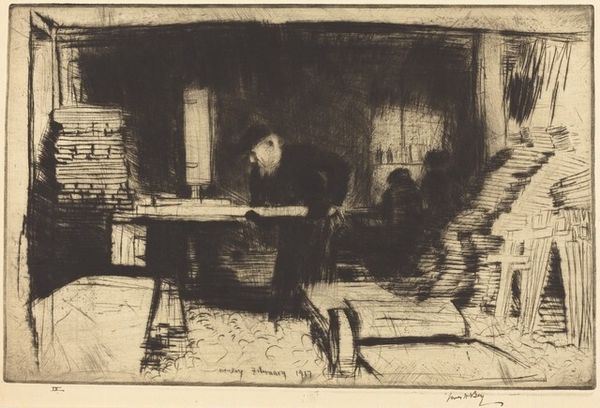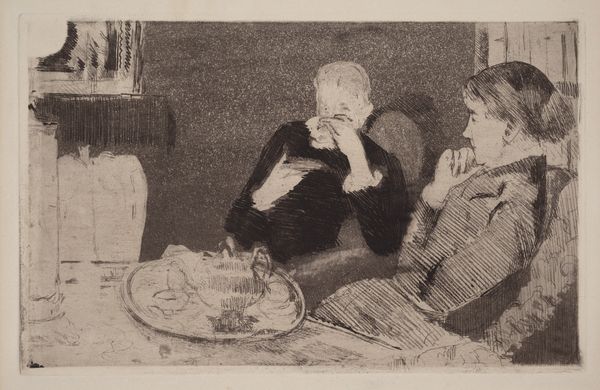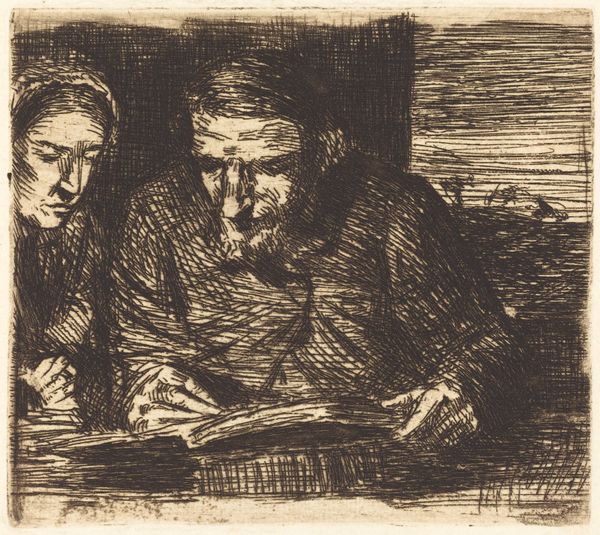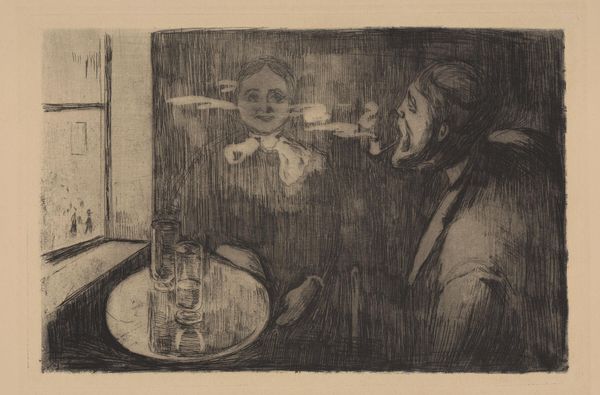
drawing, dry-media, charcoal
#
portrait
#
pencil drawn
#
drawing
#
charcoal drawing
#
charcoal art
#
dry-media
#
pencil drawing
#
group-portraits
#
portrait drawing
#
charcoal
Copyright: Public Domain: Artvee
Curator: Santiago Rusiñol's 1895 work, "Portrait of the Sculptor Carles Mani and the Painter Pere Ferran," presents us with a striking glimpse into the lives of these artists, captured in charcoal. Editor: My first impression is of somber contemplation, a melancholic study in contrasts. The stark use of charcoal creates an almost oppressive atmosphere. Curator: Rusiñol, a key figure in the Catalan Modernisme movement, often depicted his artist friends. It’s tempting to read this portrait as more than a simple depiction, understanding the artist’s interest in depicting intimate moments and questioning conventional morality. Editor: Exactly! The figure on the left seems utterly defeated, collapsed into his chair, while the figure on the right is alert, intense. It’s about more than portraiture; it feels like commentary on the artists’ place in society. Are they romanticized figures of rebellion, perhaps struggling against social norms or artistic conventions? Curator: I would hesitate to apply that framing so directly. The artwork provides few elements to confirm or refute that hypothesis. What the image emphasizes to me is the contrast between the figure in alert position and the abandoned posture of the sleeping artist, a recurring theme within bohemian circles in Europe at the end of the 19th Century. Editor: I suppose so. But isn't that stark juxtaposition—the relaxed versus the alert—itself a kind of loaded social commentary? An examination of the artists' psychological condition and also a reflection on class and the artists' position? It also brings to mind issues of male vulnerability in artistic portrayals. Curator: Yes, there's undoubtedly a psychological element here, intensified by the medium of charcoal. But think of the historical context, the rise of cafes and bohemian subcultures as vital social spaces for artists. Rusiñol is not merely depicting his friends; he's participating in constructing a visual record of their cultural milieu. Editor: That's an interesting take—the setting as much the subject as the people in it. So, is this an argument for an artwork serving as a vital component to an artist’s recognition? Curator: Precisely, the social connections and the environments inhabited by these artists solidify their identities and influence their legacies. Editor: Thinking about how artistic identity can also function as social commentary is crucial. I now see Rusiñol offering viewers a slice of bohemian life, subtly questioning societal expectations about work and leisure. Curator: The image reveals so much about friendship circles, cultural currents, and the struggles of artistic identity. Thank you. Editor: A pleasure. Art holds up a mirror, not just to faces, but to the societies that shape them.
Comments
No comments
Be the first to comment and join the conversation on the ultimate creative platform.
